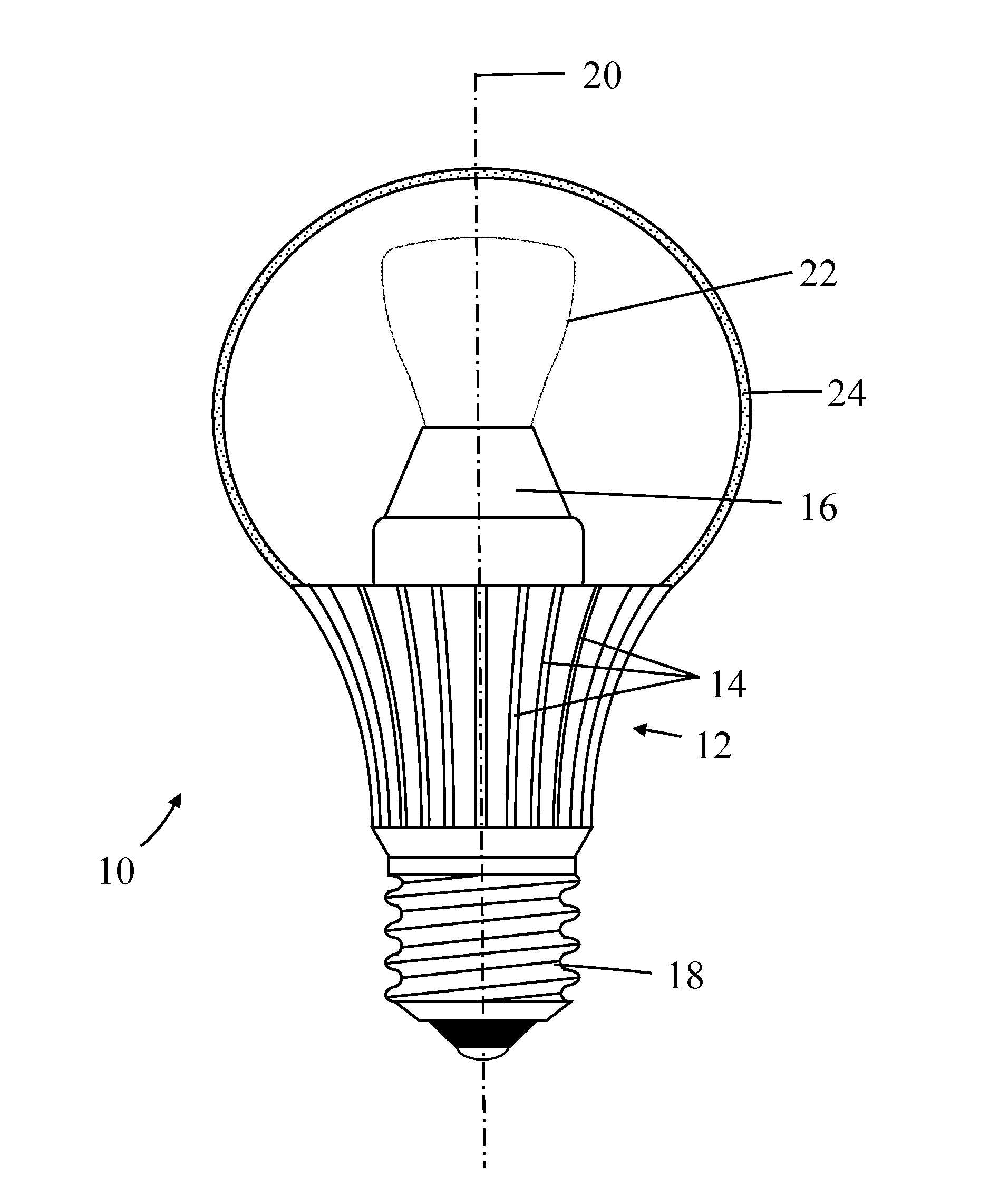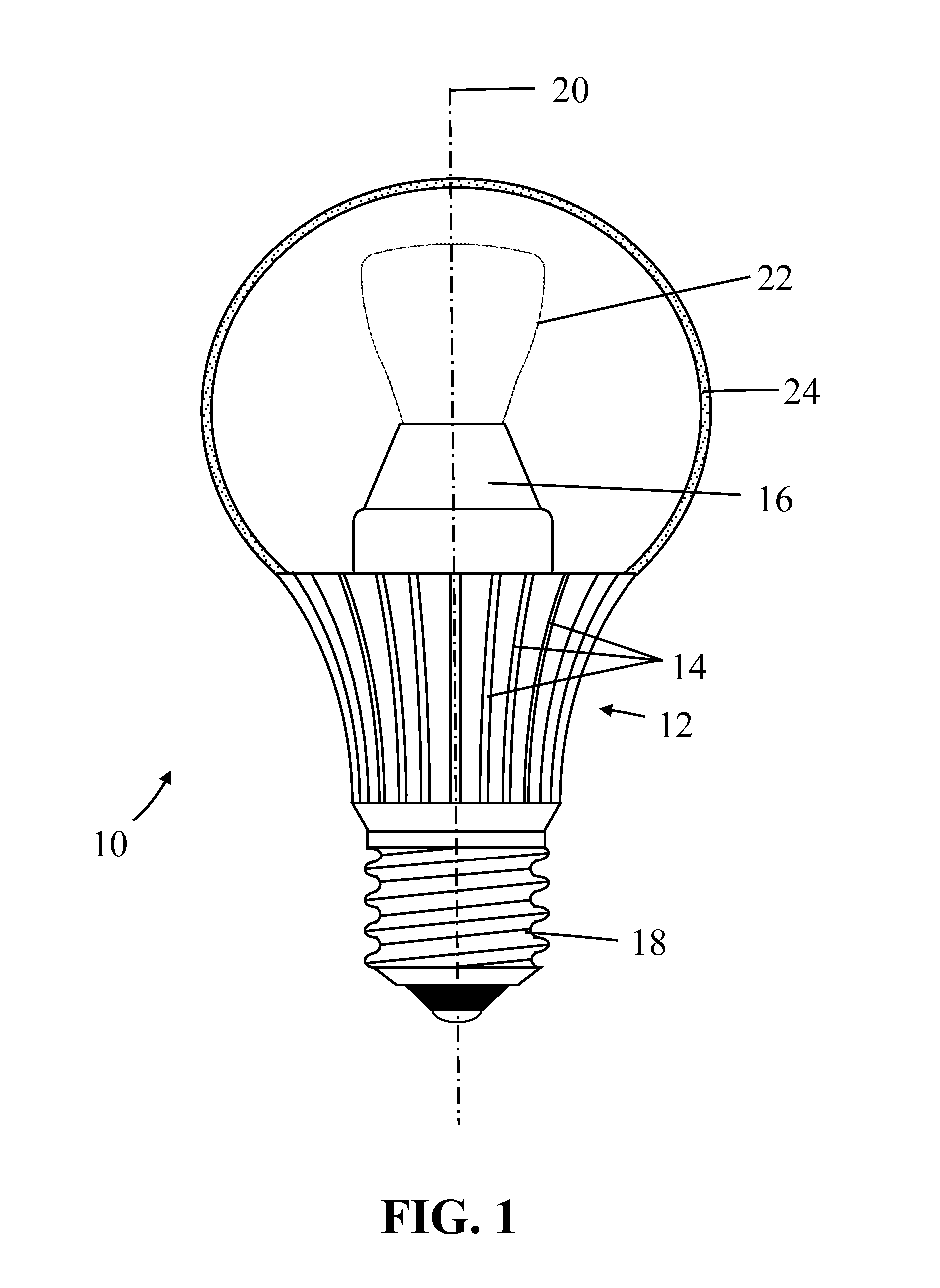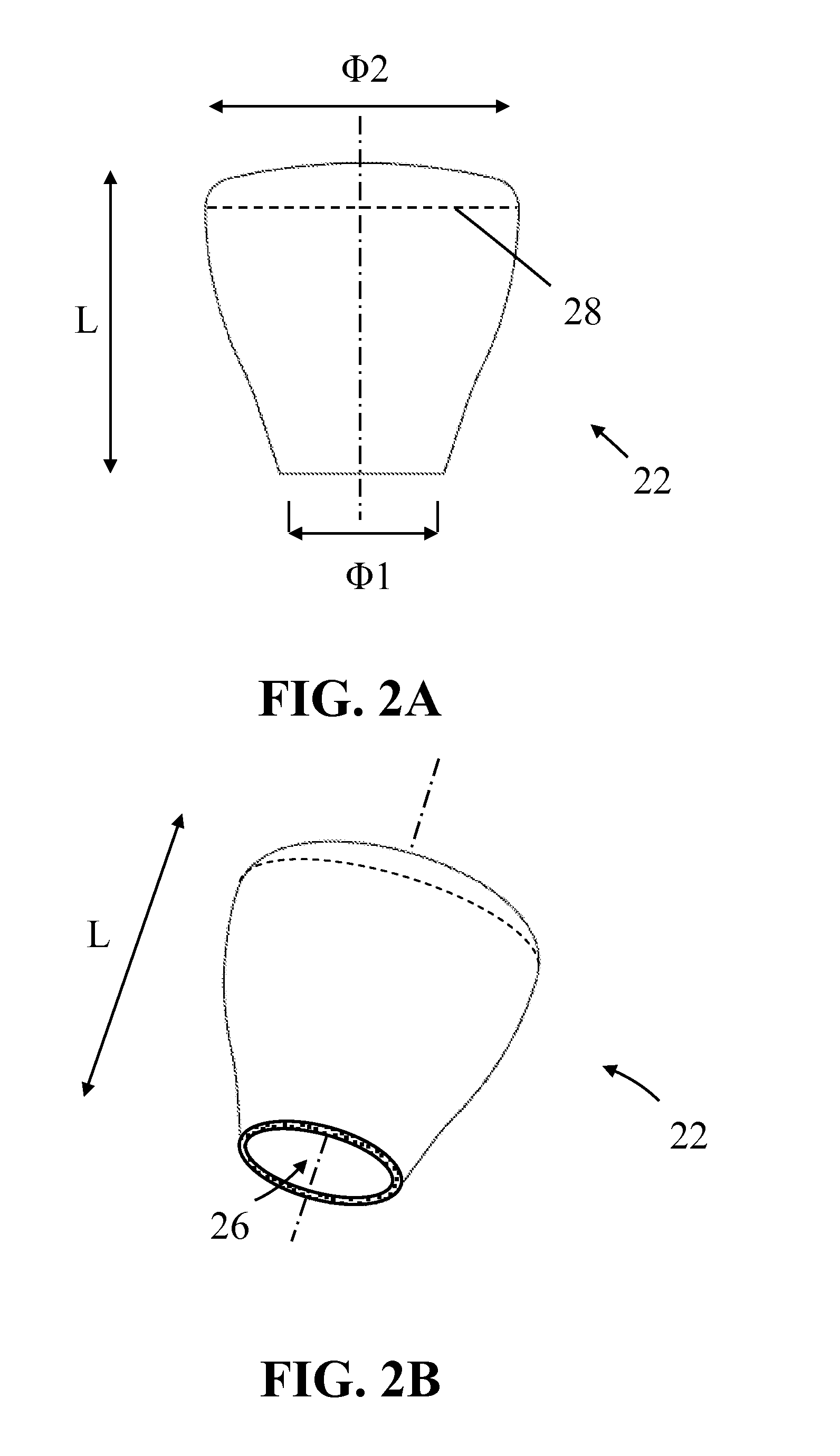Solid-state lamps with improved emission efficiency and photoluminescence wavelength conversion components therefor
- Summary
- Abstract
- Description
- Claims
- Application Information
AI Technical Summary
Benefits of technology
Problems solved by technology
Method used
Image
Examples
Embodiment Construction
[0049]Lamps (light bulbs) are available in a number of forms, and are often standardly referenced by a combination of letters and numbers. The letter designation of a lamp typically refers to the particular shape of type of that lamp, such as General Service (A, mushroom), High Wattage General Service (PS—pear shaped), Decorative (B—candle, CA—twisted candle, BA—bent-tip candle, F—flame, P—fancy round, G—globe), Reflector (R), Parabolic Aluminized Reflector (PAR) and Multifaceted Reflector (MR). The number designation refers to the size of a lamp, often by indicating the diameter of a lamp in units of eighths of an inch. Thus, an A-19 type lamp refers to a general service lamp (bulb) whose shape is referred to by the letter “A” and has a maximum diameter two and three eights of an inch. As of the time of filing of this patent document, the most commonly used household “light bulb” is the lamp having the A-19 envelope, which in the United States is commonly sold with an Edison E26 sc...
PUM
 Login to View More
Login to View More Abstract
Description
Claims
Application Information
 Login to View More
Login to View More - R&D
- Intellectual Property
- Life Sciences
- Materials
- Tech Scout
- Unparalleled Data Quality
- Higher Quality Content
- 60% Fewer Hallucinations
Browse by: Latest US Patents, China's latest patents, Technical Efficacy Thesaurus, Application Domain, Technology Topic, Popular Technical Reports.
© 2025 PatSnap. All rights reserved.Legal|Privacy policy|Modern Slavery Act Transparency Statement|Sitemap|About US| Contact US: help@patsnap.com



